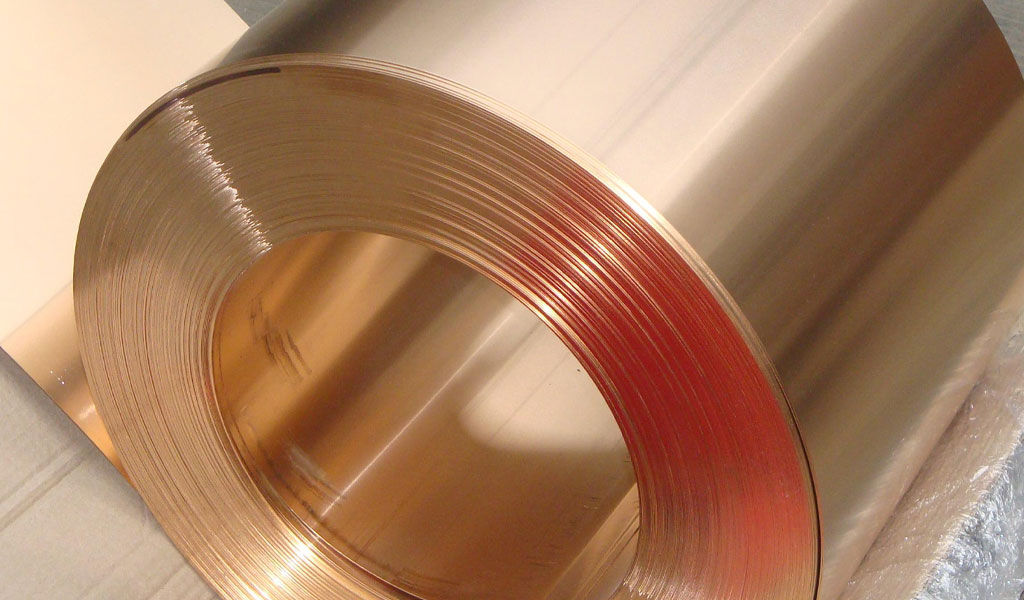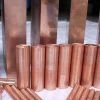
CNC spinning, or rotary swaging, is a precision manufacturing process used to shape metal components by spinning a blank material while applying force through tools. This technique is particularly valuable for creating high-precision parts with complex geometries. Beryllium copper C17200, a high-performance alloy known for its exceptional strength and conductivity, is a suitable material for CNC spinning due to its desirable properties. This article provides a comprehensive guide to CNC spinning of Beryllium Copper C17200, including material properties, preparation, machine setup, process details, and best practices.
Beryllium Copper C17200, also known as Alloy C17200, is a high-strength copper alloy containing approximately 1.8% beryllium. This alloy is characterized by its excellent strength, hardness, and electrical conductivity. It also offers good fatigue resistance and thermal conductivity, making it suitable for a range of industrial applications.
Due to its mechanical properties, Beryllium Copper C17200 is widely used in applications requiring high strength and precision, such as aerospace components, electrical connectors, and high-performance tools.
The primary advantages of using Beryllium Copper C17200 include its high tensile strength, good corrosion resistance, and excellent machinability. However, it is also known for its higher cost compared to other copper alloys and its potential health risks if the dust or fumes are inhaled.
Selecting the right grade of Beryllium Copper is crucial. For CNC spinning, C17200 is preferred due to its high mechanical properties and machinability.
Preparing the blank material involves cutting it to the appropriate size and shape for the spinning process. The blank should be free of any surface defects and contaminants to ensure a smooth spinning operation.
Working with Beryllium Copper requires adherence to strict safety protocols. The material can produce hazardous dust and fumes, necessitating the use of personal protective equipment (PPE) and proper ventilation.
Setting up the CNC spinning machine involves configuring the spindle, tooling, and workpiece holder. The machine must be calibrated to ensure precise control over the spinning process.
Tools used in CNC spinning include spinning rollers, mandrels, and form tools. The choice of tooling depends on the specific geometry and material properties of the workpiece.
Various spinning techniques can be employed, including conventional spinning and flow forming. The choice of technique affects the final properties of the spun component.
The spindle speed and feed rates must be optimized for Beryllium Copper C17200 to achieve the desired surface finish and dimensional accuracy. Higher speeds and feeds may be used, but they must be balanced to avoid excessive tool wear and material deformation.
The pressure applied by the spinning tools affects the material flow and final shape. Proper adjustment is necessary to ensure uniform material distribution and avoid defects.
Temperature management is crucial during CNC spinning to maintain material properties and prevent overheating. Cooling systems or controlled environments may be used to regulate temperatures.
Ensuring dimensional accuracy involves regular measurements and inspections of the spun parts. CNC metal spinning machines with advanced control systems can help maintain tight tolerances.
The surface finish of the spun component is assessed using visual inspections and surface roughness measurements. Proper tooling and process parameters contribute to achieving a high-quality finish.
Additional testing, such as hardness testing and mechanical property evaluations, may be performed to validate the quality and performance of the spun components.
After spinning, components may require deburring to remove sharp edges and polishing to achieve the desired surface finish.
Depending on the application, heat treatment processes such as aging or annealing may be applied to enhance the material properties of Beryllium Copper C17200.
Common issues in CNC spinning, such as material wrinkling or tool wear, can be addressed through adjustments in process parameters and tooling.
Regular maintenance of CNC spinning machines and tools is essential to ensure consistent performance and longevity.
CNC spinning of Beryllium Copper C17200 is a highly effective method for producing precision components with excellent mechanical properties. By understanding the material properties, optimizing process parameters, and adhering to safety and quality control measures, manufacturers can achieve high-quality results in CNC spinning applications.






